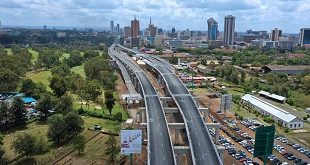
By Matsiko wa Mucoori & Mubatsi Asinja Habati
Development partners share the concern of Uganda’s civil society and media about the increasingly high levels of spending on governments administrative structures. These are resources that could otherwise be invested in infrastructure, basic education, health care, and clean drinking water for the poor.
The sharp increase in the number of districts in recent years (and continued plans for new ones)diverts both human and financial resources from existing districts and undermines the capacity of local governments to effectively deliver services. Starting at 36 districts, 80 districts last year, and now 91 districts: who can make a serious case that this expansion of the number of districts is good for service delivery? the World Bank Uganda Country Manager Kundhavi Kadiresan said at the National Budget Workshop by the Ministry of Finance, February 25-26, 2010.
Despite the donors rage about Uganda’s high public expenditure, President Museveni has created 14 new districts, bringing the number to 111. The number is projected to reach 120 by 2011.

In a 2009 paper, titled The cost of public administration, ACODE, a local think tank, says the oversize cabinet and the growing bureaucracy built around the Office of the President and the growing number of districts are the main threat to Uganda’s governance, efforts to eradicate poverty, and the achievement economic transformation.
However, President Museveni and his NRM government think differently. They hold that the creation of new districts is instead intended to cure poor, or lack of, social services. The government argues that instead more districts will provide better and more social services such as roads, healthcare, education,
The question is: do more districts improve or reduce service delivery to the people?
Do people need more district administrations rather than social services such as good schools, health units with medicines, nice roads, market for their produce, electricity, clean safe water, etc? For example in the last eight years, Apac, Amolatar, Dokolo, Lira and Oyam districts with a total population of 1.5 million people, according to the 2002 population census, have received Shs9 billion for NAADS, a governments national anti-poverty programme meant to teach farmers modern farming to increase farm yields and hence household incomes. However, every year each of these districts spends at least Shs1.3 billion on district administration wages. Thus, going by the Shs 9 billion in eight years, each year a district in Lango has been receiving Shs225 million for NAADS compared to the Shs276 million it spends on salaries of less than 300 workers. This means that the district administration takes a bigger percentage of the district budget than NAADS, which is meant to improve livelihoods of tens of thousands of farmers in the area.

For every new district there are administrative jobs created such as the LCV chairperson, Chief Administrative Officer, RDC, and heads of district departments; education, works and engineering, production, forestry, environment, human resource, service commission chairperson, etc. Each of the 23 top district administrators earns about Shs1.5 million in wages per month excluding allowances. This translates into Shs35m per month on top executives alone, excluding up to 139 other staff earning various salaries and allowances. With 139 staff getting a monthly salary of at least Shs450,000 on average, the total sum adds up to Shs62m a month.
The Shs35m spent on district administrators alone is enough to pay 175 primary school teachers per month at Shs200,000 each. If this amount was to pay 175 new teachers, then it would solve the shortage of teachers, which is one of the leading causes of poor quality of Universal Primary Education. The same amount of money could also pay 116 midwives per month, thus ensuring better healthcare for pregnant mothers, especially upcountry where women have resorted to using untrained traditional birth attendants. In effect, this would translate into better service delivery instead of creating political administration jobs. This shows that for each new district created, the country is denied 175 teachers to improve primary education and 116 midwives for safe child delivery.

The top administrators at 21 new districts receive a total of Shs750m each month. This money could sustainably provide the country with 3,750 UPE teachers and 2500 midwives per month. Uganda currently has 2,900 midwives, and is in urgent need of 2000 more to address the country’s high maternity mortality rates, which claim 14 mothers everyday. This means if Uganda cut down the size of public administration, the country would have enough funds to provide most basic social services.  Â
It has already been established that the government spends Shs35m the top 23 district officials and Shs62m on the lower public servants, which brings the total to Shs97m for each district every month. The 55 districts Uganda has added since 2001 cost the country Shs5.3 billion a month. This translates into Shs64 billion, for the 55 districts, which the country could be saving every year. In the past 10 years, it adds up to Shs640 billion, an amount enough to have constructed 70,000 classrooms (thus solving the shortage of classrooms in UPE where pupils are studying under trees and in Universal Secondary Education). With this money the country could alternatively construct or grade 25,600kms of Uganda’s impassable murram roads. It costs Shs25m to construct a kilometre of murram road.

In addition to these expenditures, the new districts come with an increment in the number of legislators. With towns also joining the fray to be upgraded to municipalities and new counties agitating to become constituencies, the burden of public expenditure will get worse. Every municipality is a parliamentary constituency and with 14 towns already applying to become municipalities and more likely to follow suit, parliament will soon shoot to 400 MPs.
Uganda has the highest number of MPs in East Africa; yet, it is the least populated. With a population of 32 million, Uganda has a parliament of 332 members. Kenya, with a population of 39 million, has 210 MPs while Tanzania, with 44 million people, has 295 MPs. Ugandan MPs rank number two in terms of salaries and allowances after Kenya. An MP in Uganda takes Shs14.5 in salary and allowances every month while their Kenyan counterparts take Shs16.5 million. Yet, Uganda’s per capita income at $ 504 is lower than that of Kenya’s $770.
A Ugandan MP earns a net pay of Shs1.75m. In addition they get a subsistence allowance of Shs4.5m, an average mileage allowance of Shs 3.6m, a constituency allowance of Shs3.2m, a gratuity of Shs780,000, which is also taxed, and a town-run allowance of Shs850,000. Thus, every month, Shs4.8 billion is spent on MPs salaries and allowances, which comes to Shs57.7 billion annually for 332 MPs.
This financial year State House was allocated Shs $39m while the Office of the President was given Shs$42m. The total allocation to the presidency totalling $81m this year does not include the expenditure on the Presidential Guard Brigade (PGB), which comes from the defence budget. State House is demanding Shs34 billion more for the presidents motorcade and related work.

The combined allocation to Uganda’s 13 referral hospitals was Shs60 billion. Mulago National Referral Hospital was allocated Shs 37.59 billion. These are hospitals that serve 31 million Ugandans, but most of the time they are short of drugs and the medical workers are paid peanuts. This has caused a massive exodus of Uganda’s health workers to other countries, including our neighbouring Rwanda, for better pay.
Health workers at nursing level who fight to save people’s lives everyday are paid between Shs200,000 and Shs300,000, about seven or ten times less than a Resident District Commissioner who gets Shs2m salary every month for political mobilisation. These RDCs have no definite academic qualifications and, yet, they receive more money than the medical officers, nursing officers, and ward nurses.
Uganda’s poverty levels stand at 31% according the 2005 IMF report down from 52% in 1992. However, rural poverty is at 80%, according to some studies. The high rates of poverty mean some districts collect taxes only enough to pay the salary of their LC V chairperson alone. Thus, new districts will increase financial pressure on the central government in order to meet their budgets.
 The Independent Uganda: You get the Truth we Pay the Price
The Independent Uganda: You get the Truth we Pay the Price





